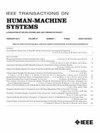学习手对手和人对人互动识别的相互激励
IF 4.4
3区 计算机科学
Q2 COMPUTER SCIENCE, ARTIFICIAL INTELLIGENCE
引用次数: 0
摘要
识别交互动作,包括手对手交互和人对人交互,在视频分析和人机交互领域的各种应用越来越受到关注。考虑到图卷积在从骨架数据建模拓扑感知特征方面的成功,目前的方法通常是在单独的实体上进行图卷积操作,并使用后期融合进行交互动作识别,这很难对成对实体之间的相互语义关系进行建模。为此,我们提出了一个互激励图卷积(me-GC)层叠加的互激励图卷积网络(me-GCN)。具体而言,me-GC使用互拓扑激励模块首先从单个实体中提取邻接矩阵,然后自适应建模它们之间的相互约束。此外,me-GC扩展了上述思想,并进一步使用互特征激励模块从成对实体中提取和合并深度特征。与图卷积相比,我们提出的me-GC在图卷积操作的每一层和每一阶段逐步学习互信息。在具有挑战性的手对手交互数据集(即Assembely101数据集)和两个大规模的人对人交互数据集(即NTU60-Interaction和NTU120-Interaction)上进行的大量实验一致验证了我们提出的方法的优越性,该方法优于最先进的基于gcn和基于transformer的方法。本文章由计算机程序翻译,如有差异,请以英文原文为准。
Learning Mutual Excitation for Hand-to-Hand and Human-to-Human Interaction Recognition
Recognizing interactive actions, including hand-to-hand interaction and human-to-human interaction, has attracted increasing attention for various applications in the field of video analysis and human–robot interaction. Considering the success of graph convolution in modeling topology-aware features from skeleton data, recent methods commonly operate graph convolution on separate entities and use late fusion for interactive action recognition, which can barely model the mutual semantic relationships between pairwise entities. To this end, we propose a mutual excitation graph convolutional network (me-GCN) by stacking mutual excitation graph convolution (me-GC) layers. Specifically, me-GC uses a mutual topology excitation module to firstly extract adjacency matrices from individual entities and then adaptively model the mutual constraints between them. Moreover, me-GC extends the above idea and further uses a mutual feature excitation module to extract and merge deep features from pairwise entities. Compared with graph convolution, our proposed me-GC gradually learns mutual information in each layer and each stage of graph convolution operations. Extensive experiments on a challenging hand-to-hand interaction dataset, i.e., the Assembely101 dataset, and two large-scale human-to-human interaction datasets, i.e., NTU60-Interaction and NTU120-Interaction consistently verify the superiority of our proposed method, which outperforms the state-of-the-art GCN-based and Transformer-based methods.
求助全文
通过发布文献求助,成功后即可免费获取论文全文。
去求助
来源期刊

IEEE Transactions on Human-Machine Systems
COMPUTER SCIENCE, ARTIFICIAL INTELLIGENCE-COMPUTER SCIENCE, CYBERNETICS
CiteScore
7.10
自引率
11.10%
发文量
136
期刊介绍:
The scope of the IEEE Transactions on Human-Machine Systems includes the fields of human machine systems. It covers human systems and human organizational interactions including cognitive ergonomics, system test and evaluation, and human information processing concerns in systems and organizations.
 求助内容:
求助内容: 应助结果提醒方式:
应助结果提醒方式:


